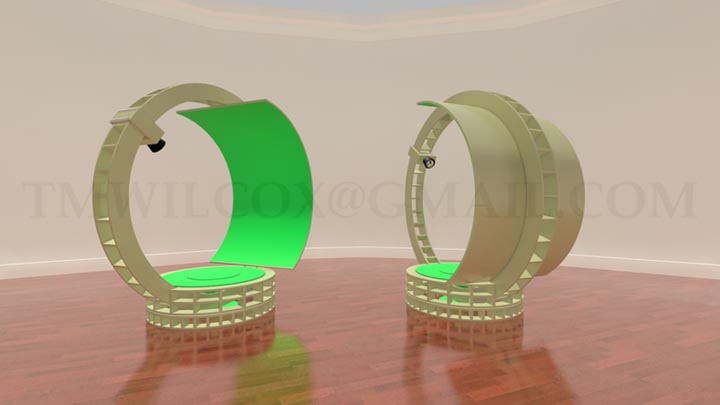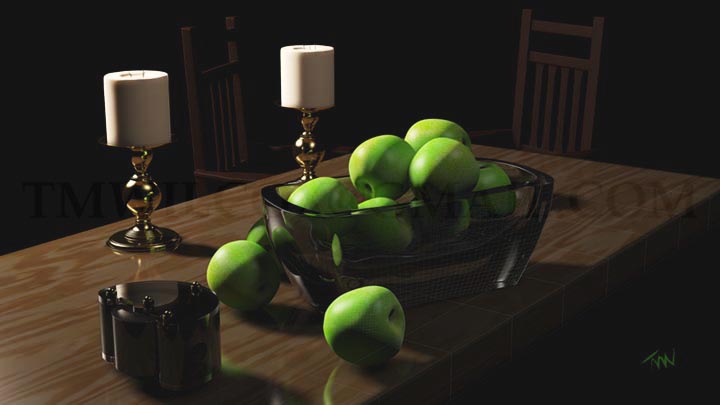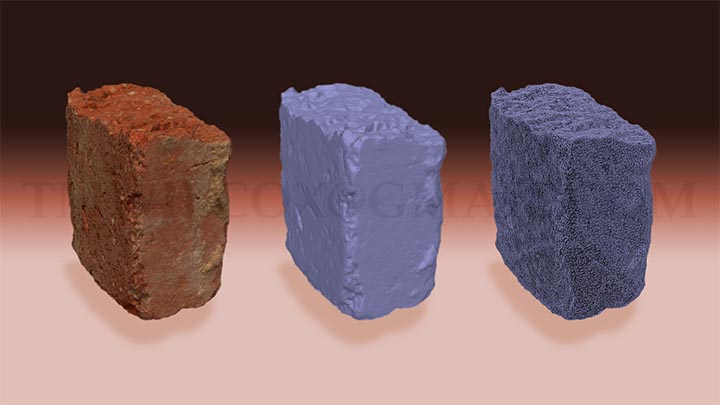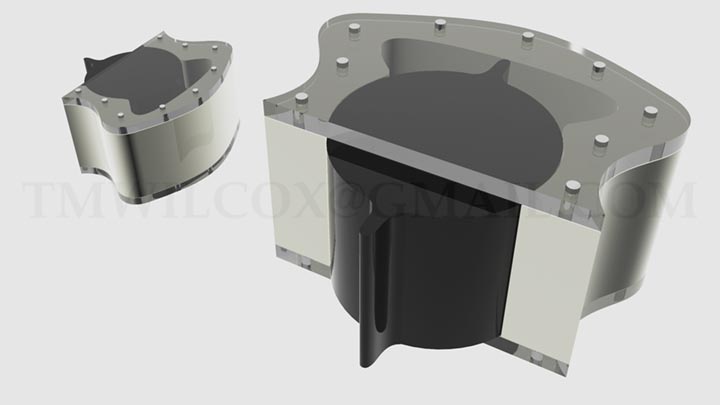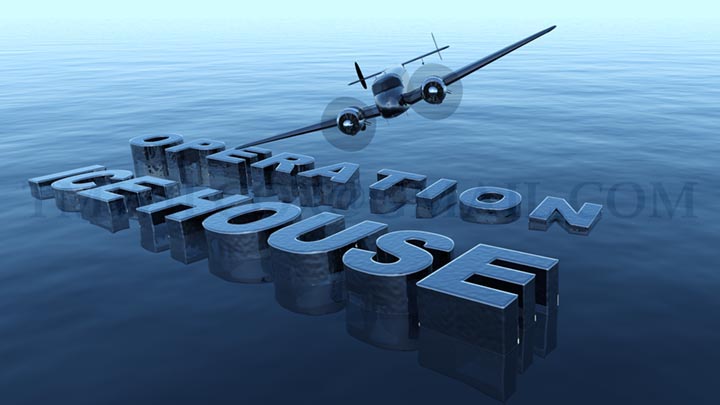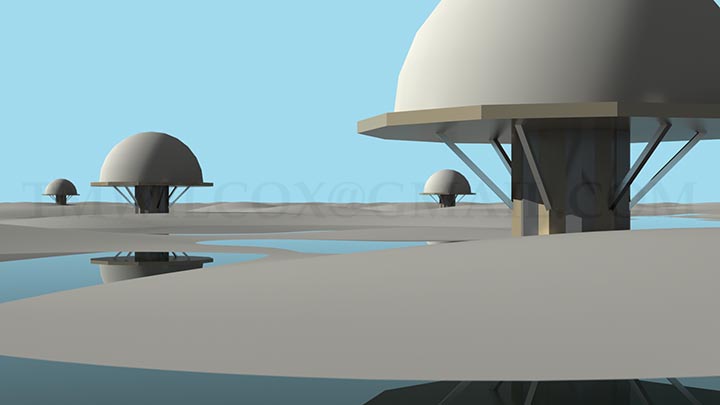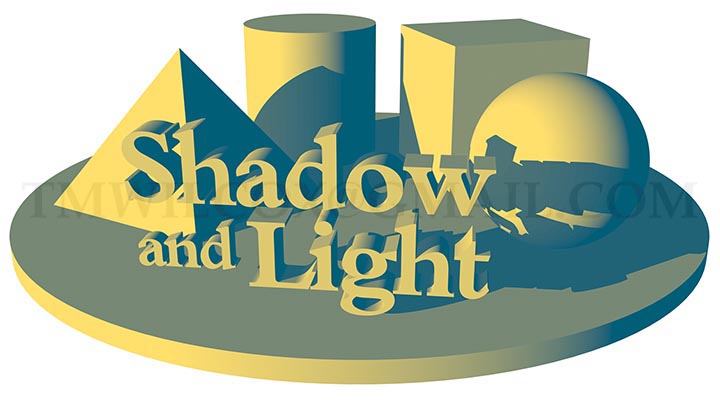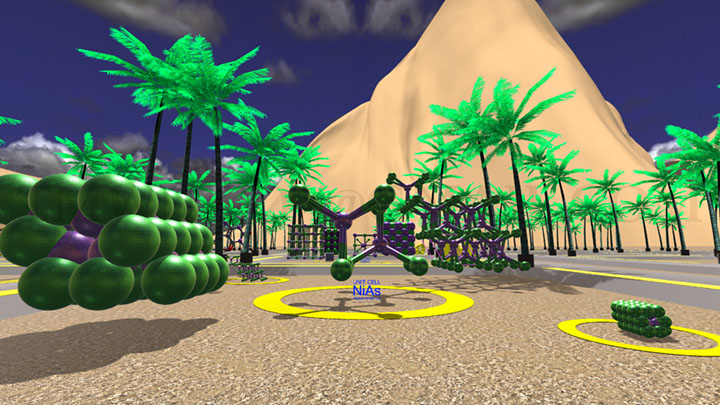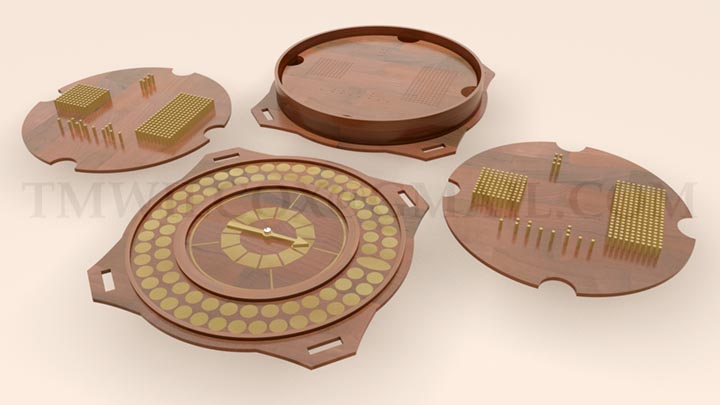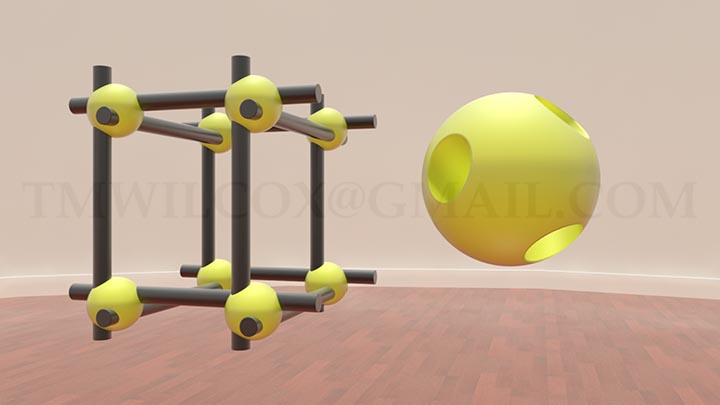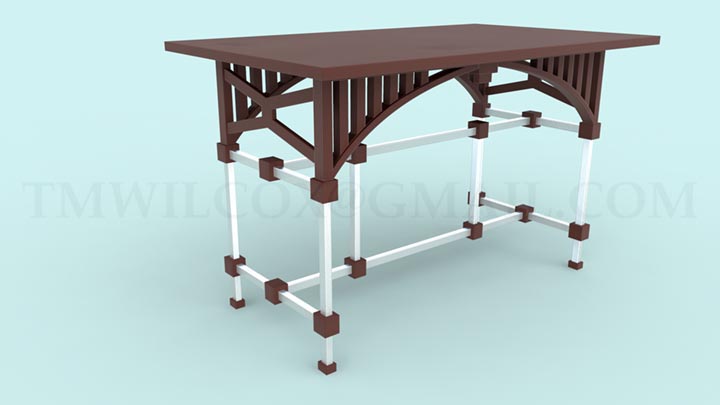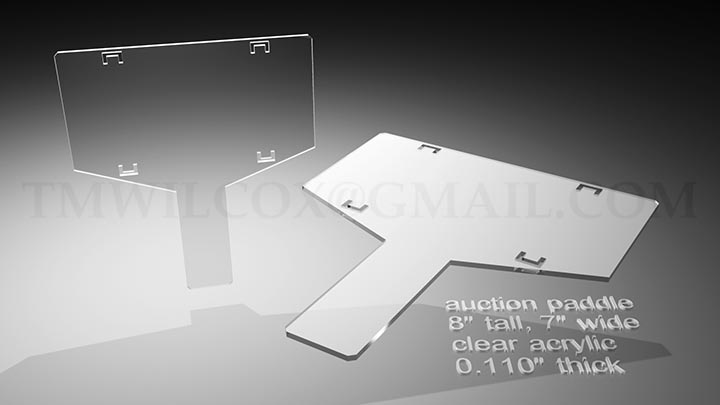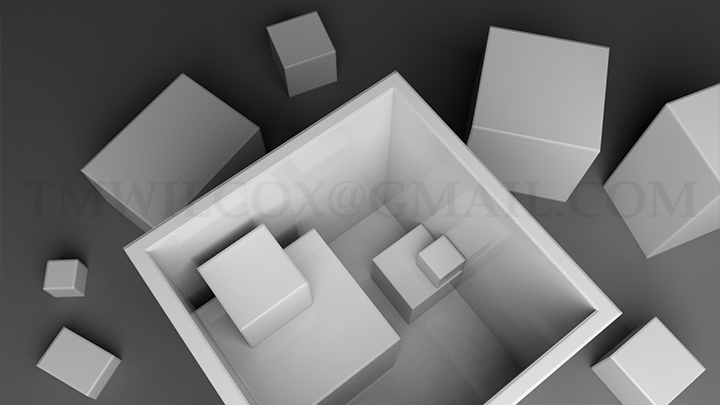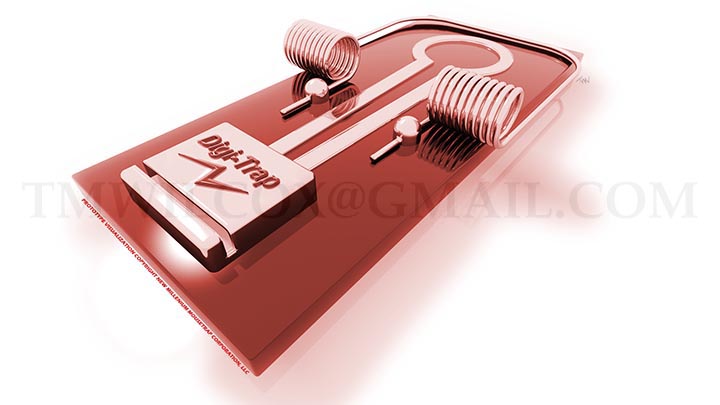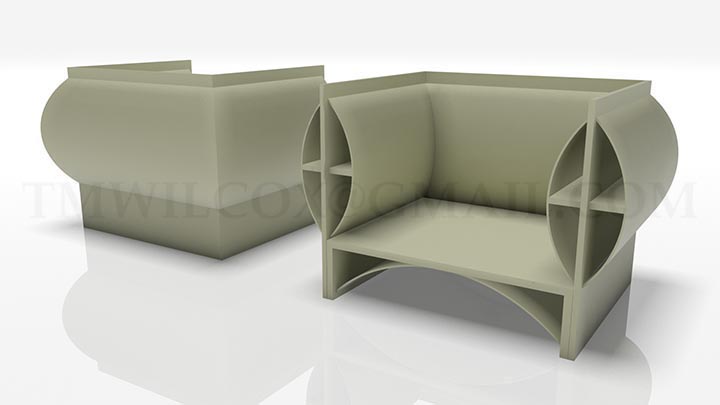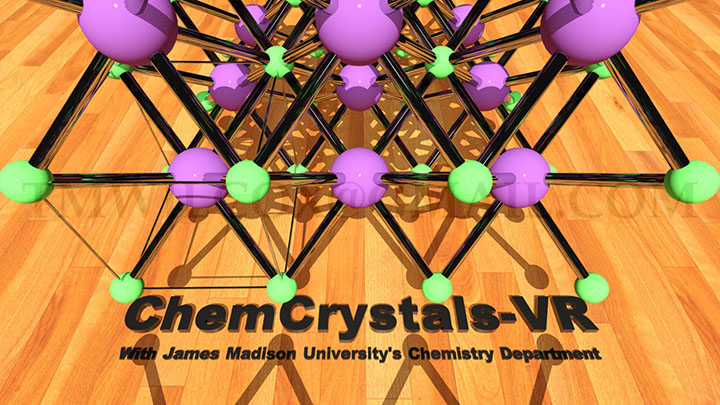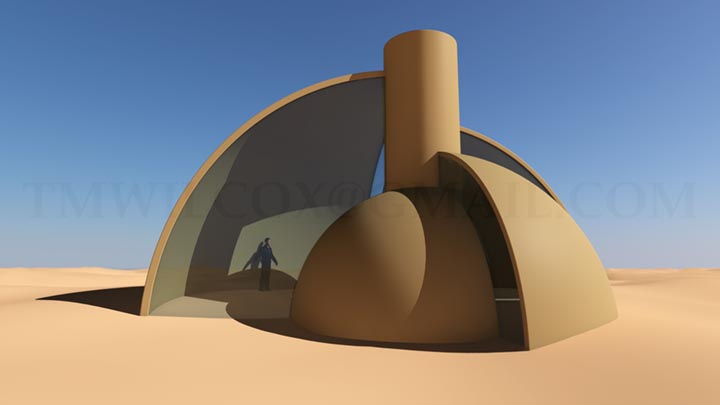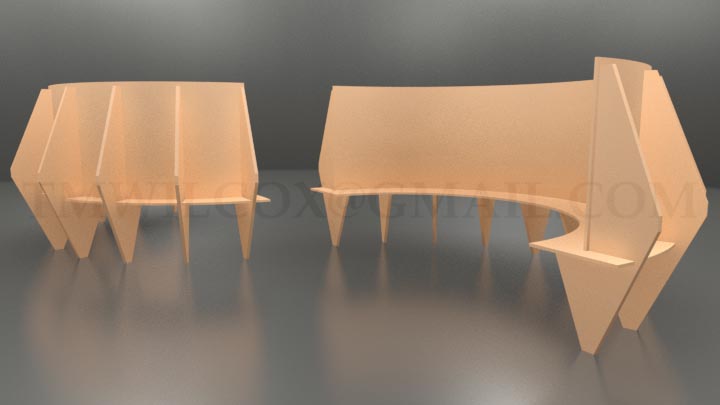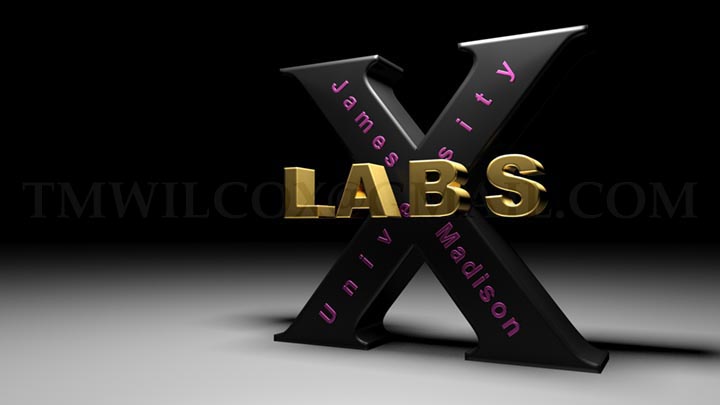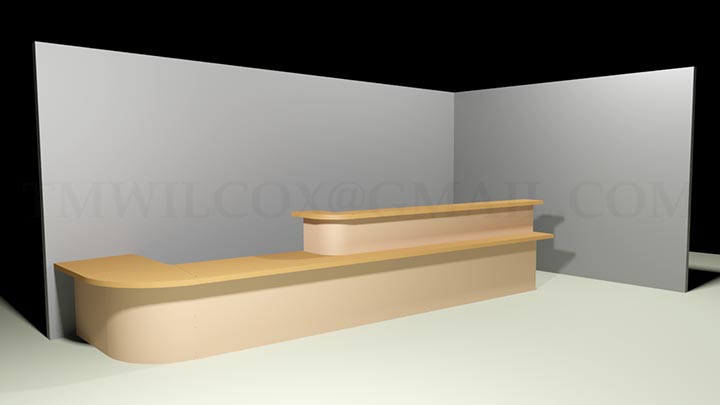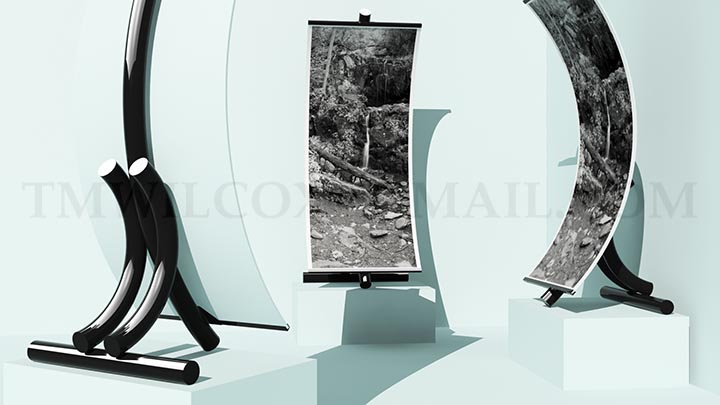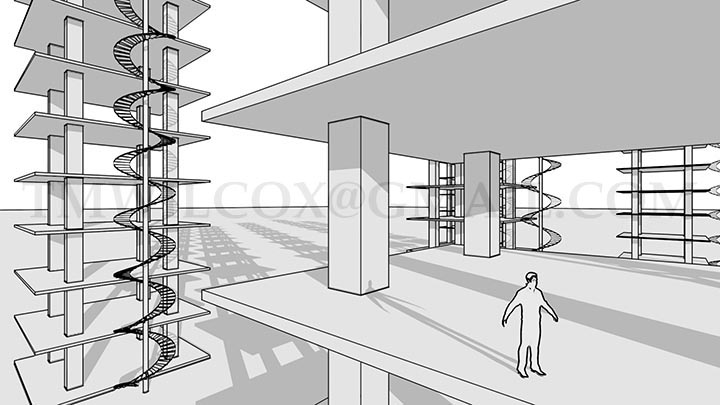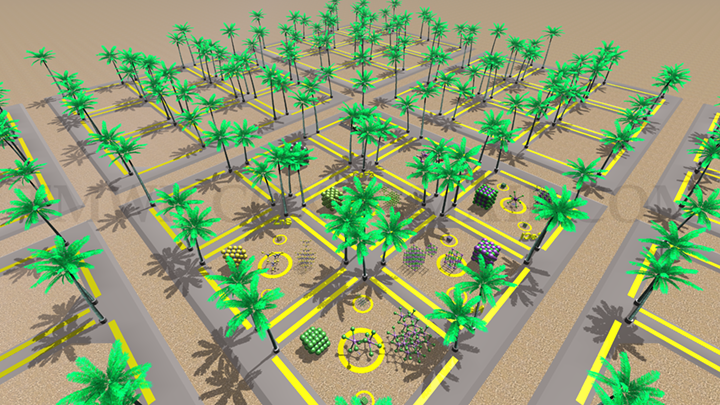
- Case Study -
VIRTUAL REALITY LAYOUT

Two professors of inorganic chemistry tried my virtual reality educational software prototype, adding it to their course materials. With its comprehensive virtual world layout, ChemCrystals-VR exhibits crystal lattice models of ionic compounds. For design and development, I used an Oculus DK2 headset, Autodesk 3ds Max, the Unity game engine, and Microsoft's C# language.
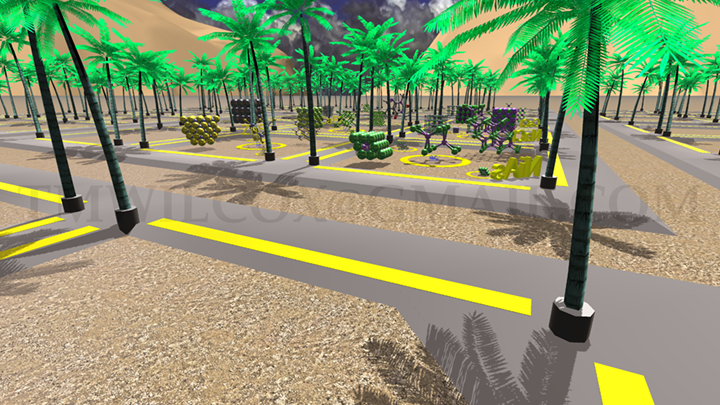
Navigating a street-like grid is easy for newcomers and non-gamers. Arrays of recessed sandboxes organize learning objects thematically for rapid cognitive mapping of an immersive teaching and learning environment. First time visitors arrive at the center of the layout. Returnees arrive wherever they last exited the program. Without a gamepad, the input device fallback is WASD keyboard and mouse controls.
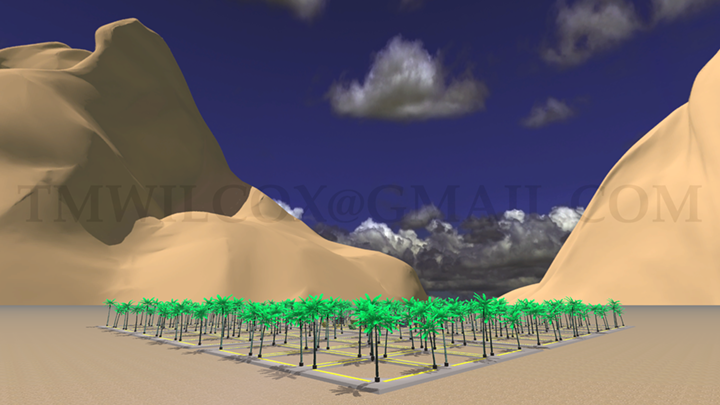
The mountains and sky are a cube map comprising polygon meshes and a photo mural borrowed from other projects and added to the prototype with Unity's skybox function. Like an all-encompassing stage backdrop, it represents the virtual world boundary. While the software's default VR navigation interface supports ground travel with an XBox controller, flying is simple with Unity. My followup prototype ChemSim-VR has balloon-like flight controls.

Two professors of inorganic chemistry tried my virtual reality educational software prototype, adding it to their course materials. With its comprehensive virtual world layout, ChemCrystals-VR exhibits crystal lattice models of ionic compounds. For design and development, I used an Oculus DK2 headset, Autodesk 3ds Max, the Unity game engine, and Microsoft's C# language.

Navigating a street-like grid is easy for newcomers and non-gamers. Arrays of recessed sandboxes organize learning objects thematically for rapid cognitive mapping of an immersive teaching and learning environment. First time visitors arrive at the center of the layout. Returnees arrive wherever they last exited the program. Without a gamepad, the input device fallback is WASD keyboard and mouse controls.

The mountains and sky are a cube map comprising polygon meshes and a photo mural borrowed from other projects and added to the prototype with Unity's skybox function. Like an all-encompassing stage backdrop, it represents the virtual world boundary. While the software's default VR navigation interface supports ground travel with an XBox controller, flying is simple with Unity. My followup prototype ChemSim-VR has balloon-like flight controls.

Navigating a street-like grid is easy for newcomers and non-gamers. Arrays of recessed sandboxes organize learning objects thematically for rapid cognitive mapping of an immersive teaching and learning environment. First time visitors arrive at the center of the layout. Returnees arrive wherever they last exited the program. Without a gamepad, the input device fallback is WASD keyboard and mouse controls.

The mountains and sky are a cube map comprising polygon meshes and a photo mural borrowed from other projects and added to the prototype with Unity's skybox function. Like an all-encompassing stage backdrop, it represents the virtual world boundary. While the software's default VR navigation interface supports ground travel with an XBox controller, flying is simple with Unity. My followup prototype ChemSim-VR has balloon-like flight controls.
